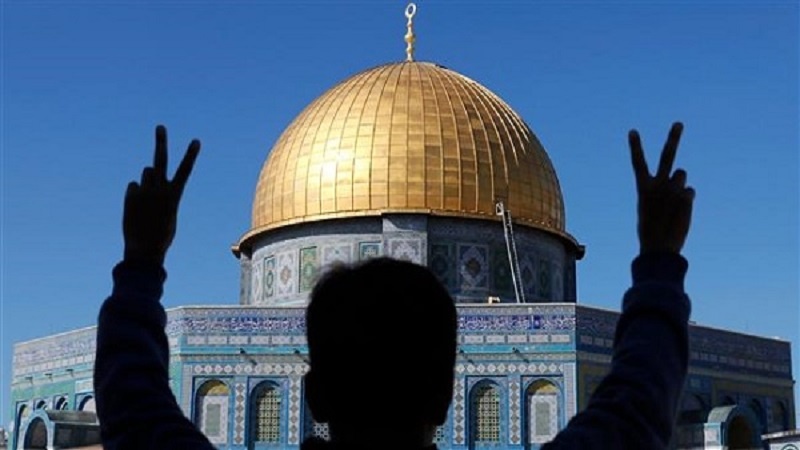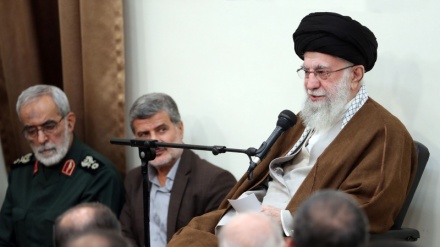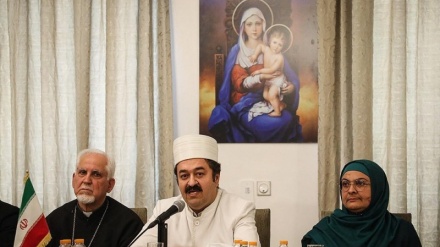Quds, Birthplace of Divine Religions (3)
Welcome to the 3rd part of Quds, Birthplace of Divine Religions. In this episode we are going to discuss the Crusades and change of control of al-Quds between Muslims and the European Crusaders in over two centuries.
Donald Trump’s act in recognizing al-Quds as the capital of the fake Israeli regime has caused political and social unrest in West Asia and beyond. In the previous program we talked about Salahulddin Ayoubi’s attack in 583 AH to liberate Quds from the occupation of Crusaders after over 90 years. The Crusades lasted two centuries. Historians consider the issue of Palestine and Bayt ul-Moqaddas (al-Quds) and paying of tribute by Christians of this city to Muslims as the main causes of the Crusades. The Crusades or so-called holy wars started in 1095 and ended in 1291 spanning almost 2 centuries of war and bloodshed. In those years Europe was the center of despotic rule of the church. The Pope made a trick to begin war and the priests and bishops sycophantically spread rumors that the signs of re-emergence of Jesus had been revealed in Palestine. Therefore, a large number of Christians set out for Bayt ul-Moqaddas (what the westerners called Jerusalem) to watch the reappearance of their beloved Prophet. The priests, each year, postponed the promise of Jesus' reappearance to the following year and in a bid to increase the number of pilgrims. At the very beginning, one of the popes who headed to Bayt ul-Moqaddas with 700 pilgrims, returned from the islands of Cyprus to Europe and spread the rumour that Muslims had prevented their entry into the city. This big lie ignited the flames of a war which lingered for nearly two centuries and killed millions of innocent people. As the priest spread his rumour, some 700,000 people from the poor masses together with a number of knights set out for Bayt ul-Moqaddas. As the crowd was marching toward the holy city people from different lands joined it so that the number of the troops mounted to millions according to some accounts.
After three years of war and plunder, only 40,000 people arrived in Bayt ul-Moqaddas and the rest were either killed in war with Muslims or died of diseases on the way to al-Quds. Following the long siege of al-Quds and a tough battle, the Crusaders entered the city and embarked on large scale massacre and took everything as booties. The commander of the Crusaders, who later on became the king of Palestine, in a report to the Pope wrote: If you want to know what we did with the enemies who fell in our hands in al-Quds you should know that our forces in Solomon's Temple plunged in the sea of Muslims’ blood. Thus the Christians ruled over Palestine for 90 years. In the final phases of the second phase of Crusades from 1147 to 1149, Kurdish commander Salahuddin Ayyubi killed the Crusaders, liberated Bayt ul-Moqaddas and expelled the Crusaders from Syria, Egypt and other countries. Supportive forces joined the Crusaders from Europe and continued the war until the third phase of Crusades began lasting from 1189 to 1192. The pope who considered collapse of Bayt ul-Moqaddas as humiliation for Christians issued the decree of war. The emperors and popes put aside their differences because of this failure and the French and British kings entered the war directly and gained broad victories and launched another massacre of Muslims. After the death of Salahuddin Ayyubi, the Ayyubid dynasty survived, and in Europe, after fierce struggles between the Pope and the Sultans, Pope Lotario dei Conti di Segni (known as Pope Innocent III) excommunicated the Sultans and ordered war against Muslims. Thus, only three years after peace, war broke out as the 4th phase of Crusades began. The crusaders conquered Constantinople and chose a king, and the fourth phase ended.
The 5th phase of Crusades was kindled with the provocation of Pope Innocent III and his successor. The popes called on European kings to recapture Bayt ul-Moqaddas (al-Quds) but they did not accept and the Pope issued the decree of war against Muslims. In the 5th war, the Crusaders were defeated and returned to their land. The 6th phase of Crusades broke out with the provocation of Pope Cencio Savelli (Honorius III). German king Friedrich first accepted the latter's bid but then regretted it. Thus, he detained the Pope and personally set out for Bayt ul-Moqaddas. Because of the intense differences among Ayyubi sultans, Muslims signed a truce with the Crusaders to give them Bayt ul-Moqaddas, but al-Aqsa Mosque remained in the hand of Muslims. The 7th Crusade broke out with the offensive of Saint Louis on Egypt in 1248. Since the Crusaders were defeated in Gaza, Louis IX was seeking to compensate for it but he was defeated and arrested. He was imprisoned and released after paying colossal reparations to Muslims. By the end of the seventh Crusade and the death of the last Ayyubid king, a Muslim dynasty called Mamluks (Slaves) took rein of affairs for over three centuries and liberated al-Quds. They defeated the Mongol army in the attack on Bayt ul-Moqaddas and killed the survivors of the Crusades in Akka. On the other hand, the Ottoman dynasty was founded with long wars and great conquests of Osman Ghazi in the battle against the Mongols and Greeks. Osman died in 1326 and his successors came to power until it was the turn of Sultan Muhammad Fateh. Sultan Muhammad Fateh, in 1453, conquered Constantinople, the most important center of Crusaders' power and the eastern Roman capital, chased crusaders across Europe and continued his conquests in Europe, Asia and Africa.
The conquest of Constantinople was a turning point in the history of Europe, and as with the Crusades, Muslim knowledge and civilization found way to Europe, which was immersed in darkness. This was also the end of the Medieval Ages and it was the source of the Renaissance. Constantinople became the capital of the Ottoman Empire for five hundred years. Consequently, significant progresses were made in industry, literature, architecture, tourism and development in the Ottoman Empire, and European states were in constant fear of it. After the Industrial Revolution, the face of Europe was rapidly changing, and Europeans surpassed Muslims in various fields of science and technology. Muslims fell into a long sleep at this time, but Europe, with the advent of its industries and the mass production and excessive production at its markets, needed foreign market to export surplus production and the supply of raw materials. So, they began the colonization of other lands and exploitation of their resources and population. If we examine the developments West Asia in history, we will find that one of the major causes of this region's development is the Palestinian land and the geopolitical significance of Bayt ul-Moqaddas (al-Quds).
Hence, during various periods Palestine has been a scene of conflicts and wars in order to achieve sovereignty over Bayt ul-Moqaddass. But in the present time, with the advent of colonialists in West Asia and the occupation of Islamic territories, including Palestine, and then the illegal establishment of the Zionist regime, a new arena of conflicts has begun.
FK/RM/MG



